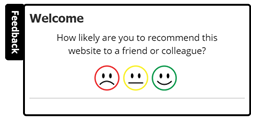It’s a little less competitive for specialist B2B publishers who either have unique content – for example proprietary data sets or unique historic content – or who produce analysis that’s important for the customer’s professional role. However, now it’s the platform and format and overall experience and usability that become important in winning or retaining users.

In other words, you need to convince customers your product is worth paying for in an environment where people increasingly expect free content.
How do you do this?
Your publishing business has all the expertise in delivering high quality information that your customers need and your teams focus on delivering subscriptions or market research or insights for your readers.
Where there is often a lack of focus in publishing is a focus on the non-content related elements within the end-to-end customer experience. As an example, when you consider how you can keep your customers coming back, is the experience you offer high on the list? Are your subscriptions always delivered on time? Do you respond to queries quickly and transparently? Is your online content presented accessibly and attractively? And do you track all of these to make sure that they’re always improving?
Ultimately, it’s the customer experience you offer that will help you stand out from your competitors. Plenty of information publishers offer good content. It’s the experience you offer alongside them that will make you and your product shine.
Below, we’ve laid out how you and your teams can use customer experience as your number one tactic for generating revenue, retaining customers, and differentiating from the competition.
Don’t Assume Lack of Negative Feedback Implies a Positive Service
Online reviews skew negative, so the wisdom goes.
It’s not wrong, either. Without actively asking a broad section of your customer base for feedback, it’s likely only the very dissatisfied will be motivated to share their thoughts.
It’s therefore easy to assume that no negative reviews equals a broadly happy customer base. And that’s a dangerous assumption to make. Plenty of unhappy customers won’t bother complaining - they’ll just leave.
In fact, it’s likely that
91% of unhappy non-complainers leave without warning. As well as being bad news for your revenue streams, this prevents you from understanding why they’re leaving. Vocal complainers might leave damaging online reviews, but at least they make it clear what the problem is and how to fix it.
The key takeaway here: keep asking for customer feedback. Do it if your online reviews are falling, but do it especially if your online reviews are non-existent. There might be something you’re missing.
Choose the Right Customer Satisfaction Metric To Measure

What sort of customer behaviour would make you stand out from your competitors?
Do you want customers that are broadly satisfied but passive? Or would you prefer customers that loved your product and recommended it to influential professional connections?
We’re guessing the latter.
‘Referral marketing’ is a hugely powerful tool for brands because people typically trust their friends, family and respected colleagues more than they do a company’s promotional activity.
Eighty-four percent of people trust product recommendations from people they know, whilst referral leads convert 30% better than non-referrals, with a 16% higher lifetime value.
And, as the general customer satisfaction threshold is higher for recommending products to others, phrasing your surveys this way is the ultimate test of customer experience.
To get a handle on this, measure Net Promoter Score over traditional customer satisfaction metrics.
Measuring Net Promoter Score
Net Promoter Score (NPS) is a customer metric that asks respondents how likely they are to recommend a product, rather than how satisfied they are with the product themselves.
To calculate your NPS score, simply ask:
On a scale of 1-10, how likely are you to recommend our product to others?

Provide a comments box for additional reasoning behind their decision so you understand why they’ve given you the score they have.
Your NPS score is the percentage of promoters (those who scored you nine or ten) minus your percentage of active detractors (those who scored you six or below). Anyone in the middle of these two sets of people is ‘passive’ and doesn’t have an effect on your overall score.
The higher your score, the more your customers recommend you to others. And, using the comments that people leave alongside their numerical score, you’ll be able to identify key areas for improvement that will help you increase the number of referrals you get.
You can measure NPS score using standard survey software and Excel sheets, but to make the process easier for yourself, you could invest in specialist NPS or customer experience software to:
- Create branded NPS surveys quickly and send them out faster
- Distribute surveys across different media, including email, SMS, website and mobile app
- Use analytics tech to process, tag and identify trends in comments you might miss
Encourage Participation in Customer Surveys With Rewards
Ideally, your customer base will be so eager to help that they will complete all your customer surveys as soon as they receive them.
In the real world, however, things don’t necessarily work like that.
People get busy, miss emails or get distracted (or, if they’ve provided feedback before with no satisfactory resolution, they might consider it a waste of time).
The more data you can get from customer surveys, the more accurately you can identify how to build customer satisfaction. So there’s nothing wrong at all in using little incentives to encourage participation!
This could be anything from a small gift for everyone who completes your survey (a £5 Starbucks voucher, for example) to entering everyone into a draw for a tempting bit of tech, or vouchers for a larger amount.
Just remember that if you start to use incentives to drive up the response rate of your customer feedback surveys, you should continue the offer. If you stop after a few months, you’ll no longer be comparing like with like when you look at the trend analysis and try and derive business actions from the feedback.
It's really powerful to hear and act on the feedback from our delegates in real-time to make our training experience ever better; the SightMill team has been great at helping us achieve this. Jelena Sevo, Director, Tolley Tax Intelligence, Tolley.co.uk
Keep Customer Engagement Front of Mind
Let’s say you ask a section of your reader base about their opinions on a digital subscription. You send out the survey and get some feedback on your product. What next?
The obvious step is to identify key trends from this feedback and take action to correct them. The step after this, which far too few companies bother with, is to inform these customers how valuable their feedback was to you and what you’ve implemented as a result.
This has a huge impact on customer engagement.
Customers who feel involved in your product development (rather than just satisfied at how a product works) engage with you more in the long term. Partly, it’s the appreciation that you’ve asked for their opinion and clearly value it. Partly, it’s the sense of ownership this creates among your customer base.
So, by emphasising the importance of customer feedback to your product offering, you are doing the following:
- Creating a product that is better suited to your customers’ needs
- Creating a stronger emotional attachment between your customer and the product
- Increasing response rates for customer surveys by showing feedback leads to direct action
As a result, customer loyalty increases, and your customer base is more likely to expand their orders or take chances on newly-launched services.
Customer Engagement Doesn’t Need To Be Difficult
You can increase customer engagement with the right communications strategy. Of course, you can take it beyond this, but at a basic level it doesn’t take much to show your customers their views really count.
Acknowledge receipt of customer feedback as soon as you receive it. This can be an automated simple ‘thank you’ message for their time and effort. To emphasise how much their feedback means, however, you could briefly go into how you plan to process it or what you have done with it in the past.
Consider how much more engaging the second example is than the first:
Example 1
Hello Chris,
Thanks for taking the time to fill out the survey. It means a lot to us!
Example 2
Hello Chris,
Thanks for taking the time to complete our feedback form.
Previously, we’ve used feedback like yours to expand our content offering, find expert industry voices to contribute to key discussions and optimise our digital magazine for non-Samsung Android tablets.
Your thoughts help us to evolve as a publisher - so they really do mean the world to us.
We’ll be collating the results over the next month or so, and we'll be sure to be in touch with any improvements we make as a result.
Follow this up with a newsletter-style email detailing the changes you have made. You may get a few of these ‘You talked, We Listened’ type of emails in your inbox from other companies - they’re great engagement tools.
Use this basic communications strategy as a cornerstone for more interaction. Could you ask your customers to beta test an exciting new product, or sit on a user panel? Building relationships based on respect for your customers’ opinions is a surefire way to increase overall customer satisfaction - and it’s likely your competitors don’t do nearly enough of it.
View Increasing Customer Satisfaction as a Constant, Iterative Process
One of the most important steps is to commit to a long-term initiative of asking for, analysing, and acting on customer feedback. If you run it for just a few months, it will change little about the culture of your business or the experience for your customers.
To get the most out of it, however, it really needs to be an ongoing process - and it needs to be at the heart of everything you do. In other words, you need to be obsessive about the needs of your customers, rather than simply focusing on the revenue they generate. Focus on the former, and the latter will come as a natural consequence.
It might help to imagine your customer feedback process like a tech company runs its main design and development processes. This involves a constant, iterative cycle of:
- Researching
- Designing
- Developing
- Testing
- Repeating
You can use this for designing both the structure of your customer feedback initiatives and what they improve. Take a look at the table below:
 In other words, you need to convince customers your product is worth paying for in an environment where people increasingly expect free content.
In other words, you need to convince customers your product is worth paying for in an environment where people increasingly expect free content.  What sort of customer behaviour would make you stand out from your competitors?
What sort of customer behaviour would make you stand out from your competitors?  Provide a comments box for additional reasoning behind their decision so you understand why they’ve given you the score they have.
Provide a comments box for additional reasoning behind their decision so you understand why they’ve given you the score they have. 